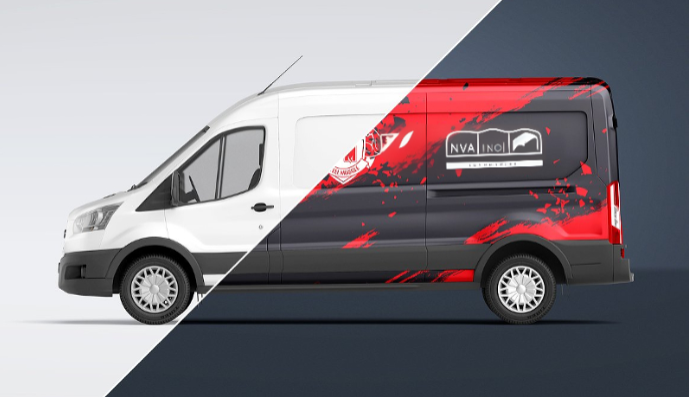In the fast paced world of digital marketing, an authentic brand stands as torchbearer for escorting businesses towards true success. Promises are just mere words, if the brand does not strive to live up to them, continually, sincerely and transparently. In that pursuit, navigating through the chaos and hurdles of the digital world becomes nothing less than a necessity. In this blog, we will dig upon the nuances and ideas behind authentic branding and how the right actionable strategies can cultivate trust, loyalty and that deep sense of connection you aspire to build with your target market and audience.
What is Brand Authenticity?
At its very inherent core, brand authenticity simply means the commitment a brand makes in congruence to its values, communication, message and actions, all cohesively. The definition of brand authenticity simply trumps over the superficial conceited marketing tactics, encapsulating the genuine and true essence of the brand. In that regard, authenticity is something that consumers resonate with on an intuitive and emotional level, fostering trust and brand loyalty, a great asset for any brand.
How To Build Brand Authenticity?
Craft Your Brand’s Story
Everyone loves listening to a compelling story, especially your audience would want to, about you. You must not merely just string words together, you must weave a captivating narrative that consolidates the complete essence of your brand. Start from jotting along the lines of the vision and mission of your brand. Then delve into what your brand is, where it is from and where it aspires to head in the future. Now highlight the unique selling points, something that makes you stand apart from the crowd. Furthermore, you can add what is the zeal that drives your brand?
Once you are able to draw the canvas of your brand’s identity, tailor these elements authentically by sharing anecdotes, milestones and experiences that stupefy your audience and grab their attention towards the brand’ journey, values and the true purpose. You can employ several channels for this purpose such as your website, social media platforms, email newsletters so that your brand’s story is communicated on pan-digital plane. By doing this, you are able to portray the heart and soul of your brand, so that it forges a more profound connection with your audience, instilling a sense of belongingness.
Harnessing the Power of Social Media for Brand Community Building
It is irrefutable that social media has revolutionized the way brands interact with their audience base, enabling them the unparalleled opportunity to build a community and engage with them. To harness this power, you must start by identifying the platforms that are the best for this purpose. Which means you will have to analyze in adept as to when your audience is most active, what are they inclined towards. Start by creating a specific Facebook Groups, where stir engagement through shared experiences, addressing frequently asked questions, and connecting with like-minded people.
Recently influencer marketing has become a popular way of making young and talented minds become the face of the brand. Moreover you can also percolate into other existing communities through addressing comments, concerns and soliciting feedback. This will associate a sense of conduciveness and inclusivity with your brand as the audience will feel valued and heard. And considering that social media platforms are brimming with young, fresh and talented target markets, you can champion a major brand advocacy by doing this right.
Harnessing the power of social media for brand community building becomes seamless with Moonbox’s innovative social media services, designed to engage, grow, and foster loyal communities around your brand.
Humanizing Your Brand
In the precarious digital world that we are living in, consumers crave authenticity, especially from the brands that they support. Not Ai, but humans crave for humans. That’s what makes a brand authentic. One extremely powerful way of doing that is by humanizing your brand, i.e show more human interactions, faces and stories behind it. By doing this you get the best of both worlds. How?
By sharing and putting up more faces of your team members, you not only humanize your brand in the race of AI generated content but also motivate and muster a sense of appreciation for your team members. Sounds amazing right? Share more behind-the-scenes glimpses of your team in action, from brainstorming sessions, product analysis meetings, morning scrum meetings to even team outings and HR activities. This builds a solid foundation of credibility with your audience and also establishes transparency and authenticity of the brand.
Consistent & Continual Communication
Consistency is vital when it comes to brand communication. Be it from messaging, emails, newsletters, press releases, or business communications, you must pay due attention to the right tone, voice and visual identity. You must be able to maintain consistency across all your channels so that the brand identity remains intact and uniform.
You can start by creating a brand guideline, an outline of your brand’s root idea, core values, key messaging, chosen tone and visual elements and making your team hyperaware about it. Whether it is a simple social media post or your website content. This consistent, congruent and continual communication effort substantiates the brand’s reputation and your audience appreciates how seriously you take your brand’s messaging.
Assessing the Authenticity
Once you are able to solidify your brand’s authenticity, you must be able to measure the impact to assess the effectiveness and refine your approach. Start by tracking the metrics of engagement levels, customer feedback and lead conversion from diverse platforms. This can give you valuable insight into what your audience thinks of your brand. Based on this assessment you can further amend and refine your approach of brand communication.
Bottomline
Brand authenticity is the cornerstone to survive this cruel, cut throat and chaotically competitive digital landscape. At this point, the importance of brand authenticity is well corroborated. This practice needs consistent commitment and alignment with core values on all vertices of your business.
At Moonbox, we help you steer through this digital jungle and get the elixir of successful branding with authentic and creative strategies. Are you ready to have a heart to heart candid conversation with your audience?
What’s stopping you? Let’s do this over the Moon together!



















